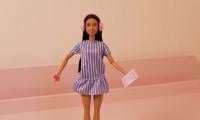Dialogue with haiku pioneer
Dr. Muhammad Amin’s haikus are about colours of nature, personal experiences, widening cleavage between the rich and the poor etc.
Being a multi-faceted personality, he is the author of almost thirty books on poetry, philosophy, literary research and criticism. He has written in Japanese, English, Punjabi and Urdu language as well. His books include translations of Chinese, Japanese poetry and dramas, Japanese-Urdu Reader, Japanese-Urdu Dictionary etc.
Talking about his formative years he said: “Born in Sahiwal in 1947 and educated at Punjab University, Bahauddin Zakariya University (BZK) and Waseda University, Tokyo, I have received several awards and honors. My poetry has appeared in many literary periodicals, has been selected multiple times for poetry anthologies. I was Chairman of BZK University Multan and have been a visiting poet at many forums abroad.”
“Several theses have been written on my works such as Dr. Muhammad Amin Shakseeyat Aur Fun, Professor Dr. Muhammad Amin Ki Adabi, Taleemi Aur Tadreesi Khidmaat ka Jayayza, Dr. Muhammad Amin Ki Shaayeri Ka Tajzeeyati Mutalaya,” he added.
Responding to a question if a great poem can be written in five lines, Dr. Amin said: “Meaningful expression always resides in a relatively few lines of otherwise off-the-point poetry. Greatness is purely a subjective issue. For me, haiku is the sum-total of human feelings.
Dr. Amin claims that he makes his poetry resonant to the ear, whose sound is similar to we recognize as poetry:
Phalsafay ki ketab kholi tu
Sartre kay haroof par titli
Apni hast ki souch men gum thi
Hajoomay shehr tha aur rotioun kay tukray thay
Hamaray hisay ka bas ek nawala kia karta
Tumaray sher mein mai ki sabeel jaari thi
Yeh meray haath mein toota payal kia karta
Responding to a question as to how he developed a taste for haiku he said: “In 1970’s, I visited the Land of Rising Sun for the first time, I stayed there as a student for post graduate research in sociology. There I got certificates in Japanese language. Haiku spoke to me in ways so new, powerful, intimate, and revelatory that I knew I wanted to read more. As haiku impressed me so I decided to sow it in Urdu. Many consider me as the pioneer of Urdu haiku. My first collection of Urdu haiku appeared in 1981:
Dekhta houn main baar baar garhi
Kia khabar intezaar kis ka hai
Zeest juz intezar aur hai kia
Jamnoun kay darakht sawun mein
Jab bhi barish barasti hai os sham
Jamni rang phail jata hai
“Traditionally, haiku emerges from emotions such as love and hate. But for me, the motivation to write haiku comes from events and people living around as well as past memories,” he said:
Ek purani shakasta almari
Teri tasveer mil gayee muj ko
Kitnay barsoun ki yadain lout ayeen
Ghar ki chokhat udas hai har sham
Surkh pathon ka dher rehta hai
Kia khazan phir se lout aye hai
“My haikus are most often leavened by a seasoning of emotion and depict aspects of human behaviour:
Ek diya adh khulay dareechay mein
Out se jhankta koi chehra
Muntazir hai kisi kay anay ka
Aks dar aks raat dhalti hai
Zard pathoun ka dher choukhat par
Subh ka chaand kal se pheeka hai
By the time our interview got over, night was about to fall. I said goodbye to him. He stood up and offered me his hand with a smile. I left the place with the memories of his warm smile.
-
 Canadian PM Visits China After A Decade Of Diplomatic Strain: What Deals Are In Focus?
Canadian PM Visits China After A Decade Of Diplomatic Strain: What Deals Are In Focus? -
 New York Plans Limited Rollout Of Self-driving Taxis
New York Plans Limited Rollout Of Self-driving Taxis -
 Sarah Ferguson Faces Painful Choice Between Peace, Family Bond
Sarah Ferguson Faces Painful Choice Between Peace, Family Bond -
 Nvidia Clarifies ‘no Upfront Payment Needed For H200 Chips Production’
Nvidia Clarifies ‘no Upfront Payment Needed For H200 Chips Production’ -
 Africa First: Nigeria Set To Approve Landmark AI Rules For Digital Economy
Africa First: Nigeria Set To Approve Landmark AI Rules For Digital Economy -
 WhatsApp Tests Built-in Supervision Feature Long Missing From The App
WhatsApp Tests Built-in Supervision Feature Long Missing From The App -
 Iceberg A-23A Turns Blue As Scientists Warn Collapse Is Imminent
Iceberg A-23A Turns Blue As Scientists Warn Collapse Is Imminent -
 FIFA Selects Stats Perform For Betting Data And Live Streaming
FIFA Selects Stats Perform For Betting Data And Live Streaming -
 Is Jessica Simpson Really Joining 'The Bachelorette'?
Is Jessica Simpson Really Joining 'The Bachelorette'? -
 Brayden Point Injury Raises Concern After Early Exit For Tampa Bay Lightning
Brayden Point Injury Raises Concern After Early Exit For Tampa Bay Lightning -
 Meghan Trainor Addresses 'toxic Mom Group' Rumours Again
Meghan Trainor Addresses 'toxic Mom Group' Rumours Again -
 Mattel Autistic Barbie Doll Aims To Boost Representation And Inclusion
Mattel Autistic Barbie Doll Aims To Boost Representation And Inclusion -
 William Makes Calculated Move To Future-proof His Public Role Amid Harry Return
William Makes Calculated Move To Future-proof His Public Role Amid Harry Return -
 Elijah Wood Breaks Silence On Possible Return To New 'Lord Of The Rings' Film
Elijah Wood Breaks Silence On Possible Return To New 'Lord Of The Rings' Film -
 Aaron Rodgers Wife: What The NFL Quarterback Has Said About His Marriage
Aaron Rodgers Wife: What The NFL Quarterback Has Said About His Marriage -
 Buckingham Palace Shuts Down Claims It Can Step In On Harry’s Security
Buckingham Palace Shuts Down Claims It Can Step In On Harry’s Security



